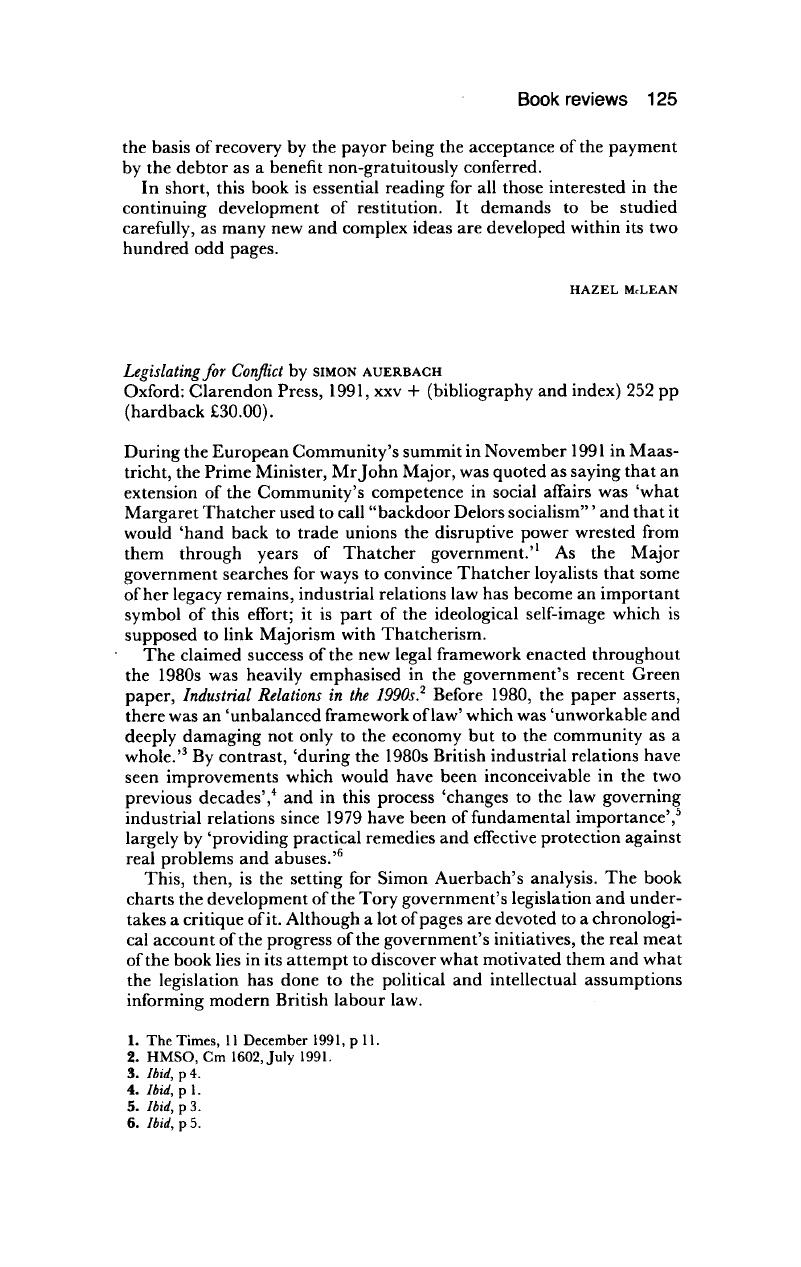No CrossRef data available.
Article contents
Legislating for Conflict by Simon Auerbach Oxford: Clarendon Press, 1991, xxv + (bibliography and index) 252 pp (hardback £30.00).
Published online by Cambridge University Press: 02 January 2018
Abstract

- Type
- Book Review
- Information
- Copyright
- Copyright © Society of Legal Scholars 1992
References
1. The Times, 11 December 1991, p 11
2. HMSO, Cm 1602, July 1991.
3. Ibid, p 4.
4. Ibid, p 1.
5. Ibid, p 3.
6. Ibid, p 5.
7. Inter alia by the present reviewer: see Ferdinand von Prondzynski Freedom of Association and Industrial Relations, 1987, chapter 11.
8. Early examples, written at a time when the Conservative agenda had not really been revealed yet, were Lewis, R., Davies, P. and Wedderburn, S. W., Industrial Relations Law and the Conservative Government, Fabian Society, 1979 Google Scholar; and R. Lewis and B. Simpson, Striking a Balance? 1981.
9. See in particular Lord Wedderburn, , The Worker and the Law, 2nd edition, 1986, pp 83-6Google Scholar.
10. See Lord Wedderburn, , ‘Labour Law: From Here to Autonomy?’ (1987) 16 ILJ 1 CrossRefGoogle Scholar.
11. See Labour Relations: Heritage and Adjustment, 1979.
12. As part of the process by which the European Community prepared for the completion of the Single Market, it began to develop what became known as the ‘social dimension’: see ‘The Social Dimension of the Internal Market’, in Social Europe, special edition, 1988.




